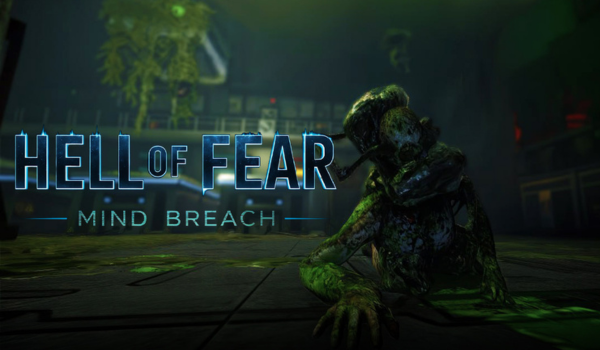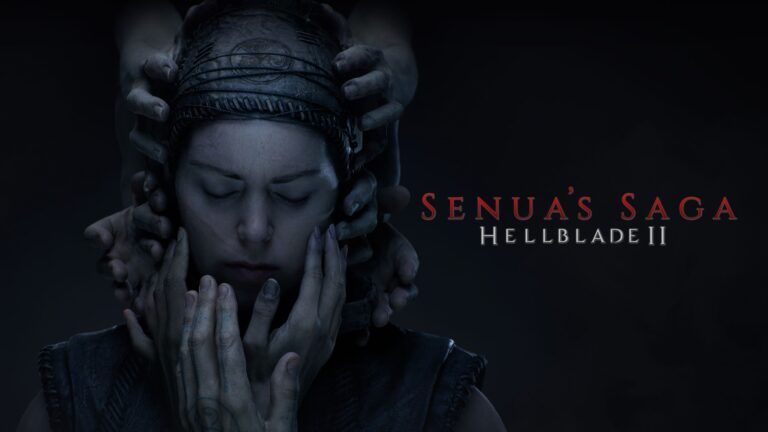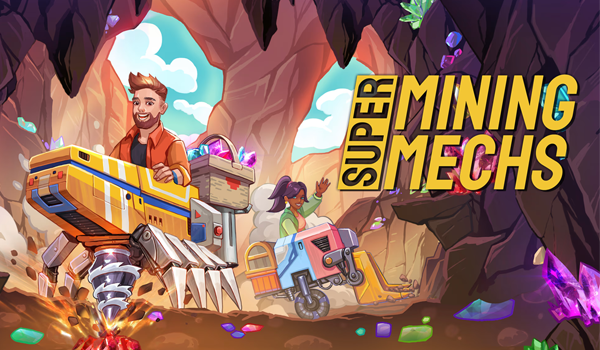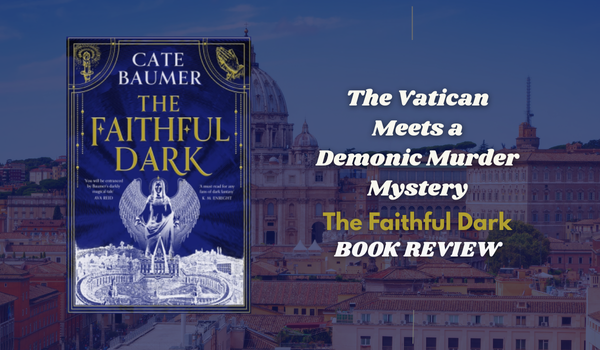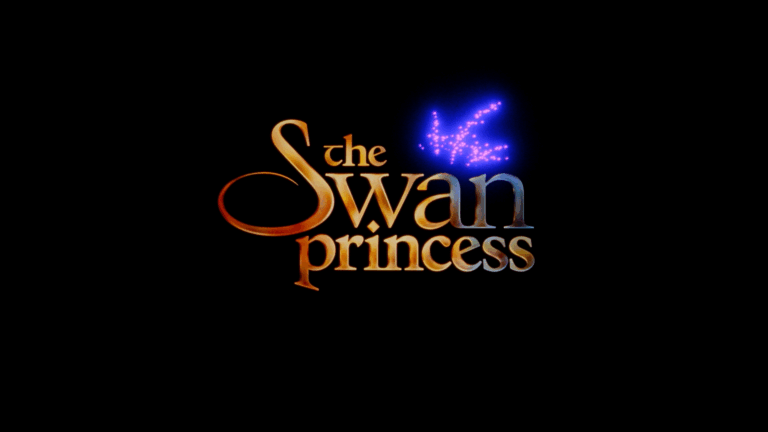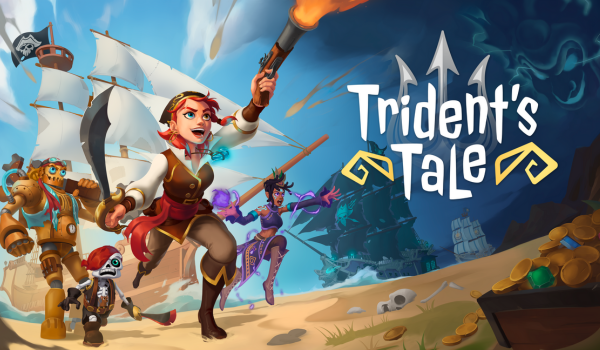
Ahoy me hearties! Take sail with Captain Ocean and her crew as she fights both the Navy and the undead in the quest to reforge an ancient relic and stop an impending invasion in Trident’s Tale.
3DClouds’ Trident’s Tale is a third-person action adventure with a mix of naval combat set in a fictional pirate age of magic and mystery. Nineteen-year-old Ocean Tern is living a peaceful yet uneventful life on Woodwana Island and yearns for adventure and excitement.
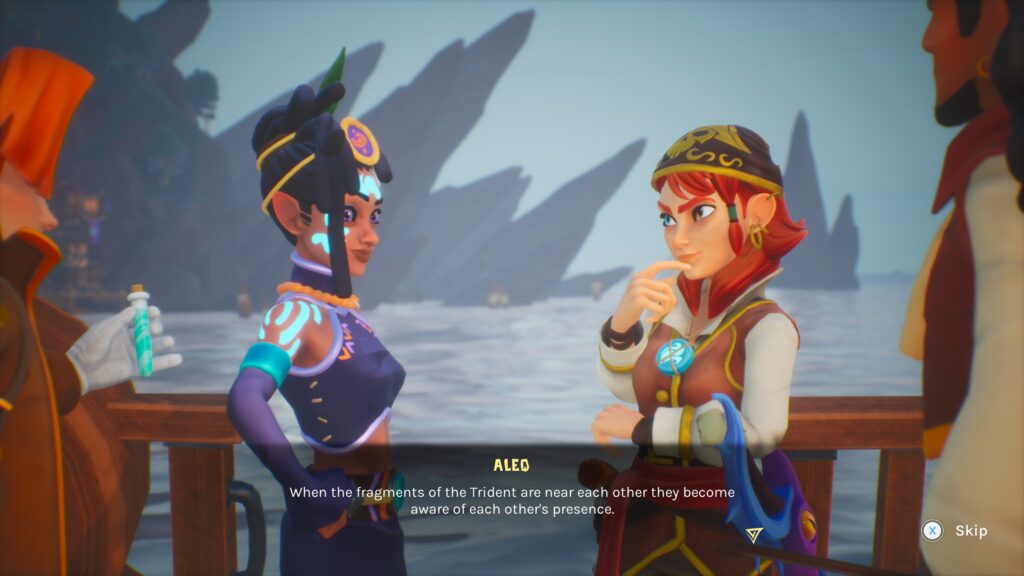
Ocean gets her wish when she discovers a mystical fragment of the Storm Trident and is forced to set sail when an undead crew plunders the island and kidnaps her surrogate father in search of the Trident. With the help of the mystic Aleq, Ocean learns the legend of the Storm Trident and vows to track down the shattered pieces, build a crew of her own and stop the villainous pirate Cornelia from claiming the Trident and ruling the world.
The world in this case is a few hundred square kilometers of open sea scattered with two dozen or so islands which are free to explore however you want, although, for balancing, you should really follow the main path as unlocks are mostly tied to plot progression. The first few islands and story beats introduce you to more crew to recruit who in turn unlock more attacks for you to use.
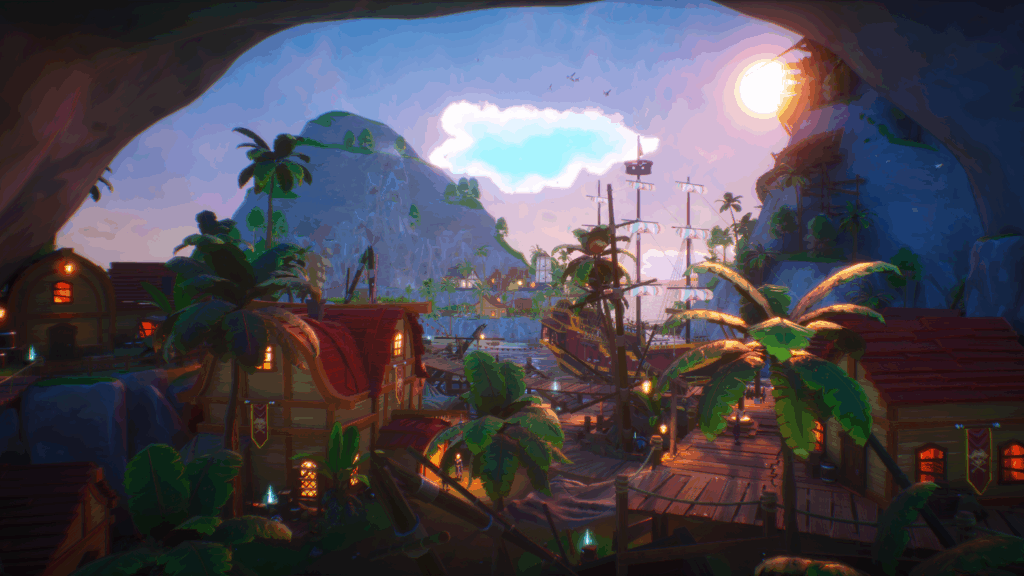
On foot, Trident’s Tale plays like a 3d action platformer with Ocean able to platform and has access to light and heavy sword attacks, a single shot pistol, magic attacks and a dodge. At the start, you are very weak and death will come thick and fast, but as you gain more abilities and pay attention to what they do you will soon be stomping over all challenges in your way.
Your magic and pistol are powered by a resource called Divinorum and can be recharged by landing attacks with your sword. Magic and gunshot attacks can also inflict status ailments which can be quite devastating depending on enemy weakness, so extended battles rely on a nice mix of all your abilities complementing each other.
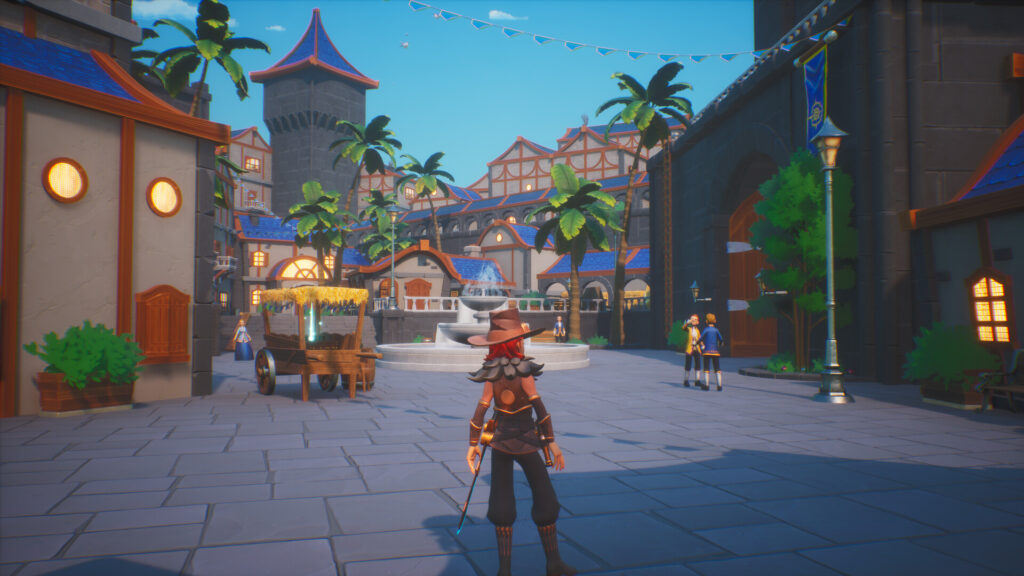
Each island has a self-contained mini-adventure or mystery to solve, which usually has you exploring for a Macguffin or tracking down an individual. Some islands have dungeons to delve into which involve some switch puzzles or platforming trials. Each island also has several secrets to find which could unlock additional upgrades to discover.
Sailing between the islands, the gameplay shifts to control of your ship. For combat, you can fire your cannons in the four cardinal directions, control your speed and still have access to your magic attacks. Again magic uses Divinorum but this time your cannon attacks refuel the pool.
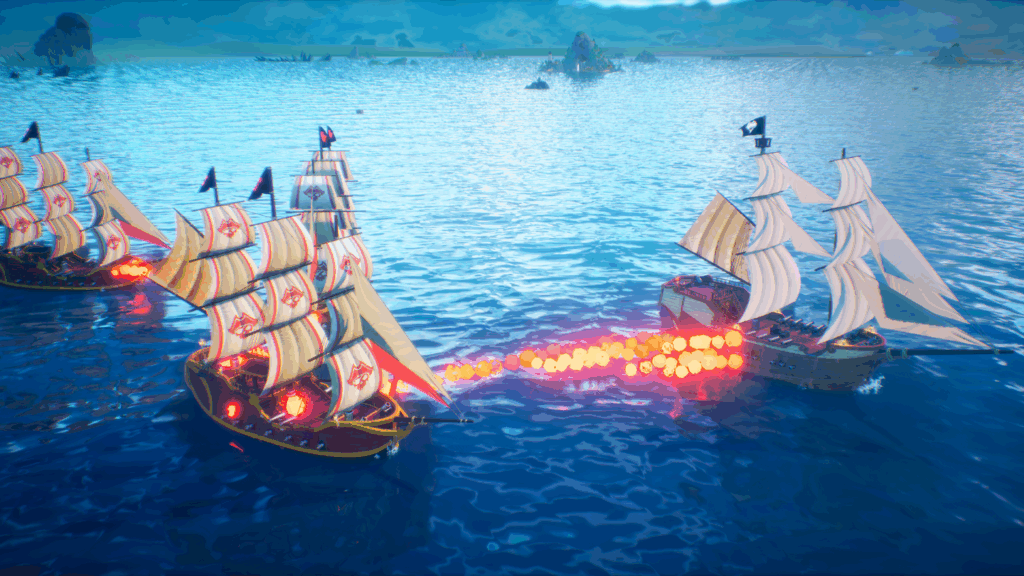
Sailing feels really nice and works how you expect. To switch between cannons you simply angle your camera in the desired direction and aim and reload time is shown on the reticule. Turning is affected by the ship’s speed so to make tighter turns you must go slower making each battle a risk assessment between being nimble or fast.
The transition between sailing and exploring on foot is seamless. You can come off the wheel anytime to speak to your crew or exit the boat and aside from transitions to interiors there is barely a loading screen in sight. Although when they do appear, each is equipped with a pirate pun! Your mileage may vary from enjoyment of this inclusion.
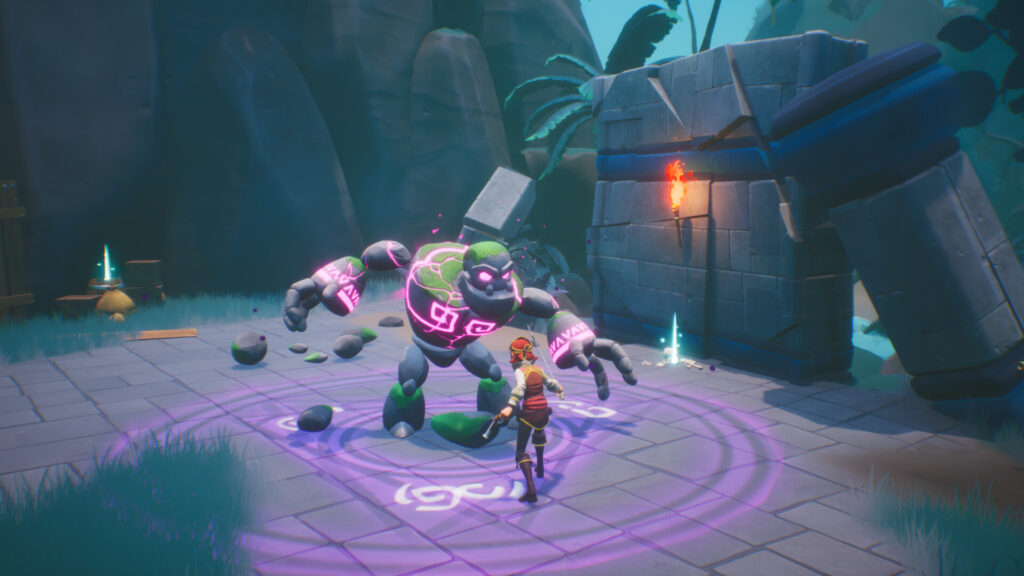
Speaking to your crew, you can share a grog with them to level up their respective magic attack down a branching path of upgrades. The ship also offers your captains quarters for a quick sleep, which can act as a free full health restore and change the time of day. Although the world does have a day-night cycle, I didn’t find any time-related puzzles or enemy encounters so this may just be aesthetic.
Throughout your adventure, you will pick up a variety of materials and diagrams for crafting upgrades for Ocean herself as well as her ship. Each upgrade belongs to a specific faction which can offer bonuses. The Navy set for example can do bonus damage to skeleton crews and vice versa, although they all do boast their own aesthetic so it does come down to looks versus utility more often than not. Health potions and status cures are also craftable from your ship’s crafting table which automatically upgrades during the main plot.

Aside from the main quest we do get some side quest content to explore. We can recruit additional crew members who are not plot-critical, gather treasure maps where we actually have to identify land masses and have a hit list of monsters to take down. Some of these quests do border on obscure as they require you to track down several items but with no hint as to where they could be, so for completion’s sake, you will be sailing from island to island scouring every inch to track them down. I feel this should have been more forgiving as I can see more impatient people not bothering, but there were some little nods to other pirate pop culture hidden around the world which did bring a smile to my face.
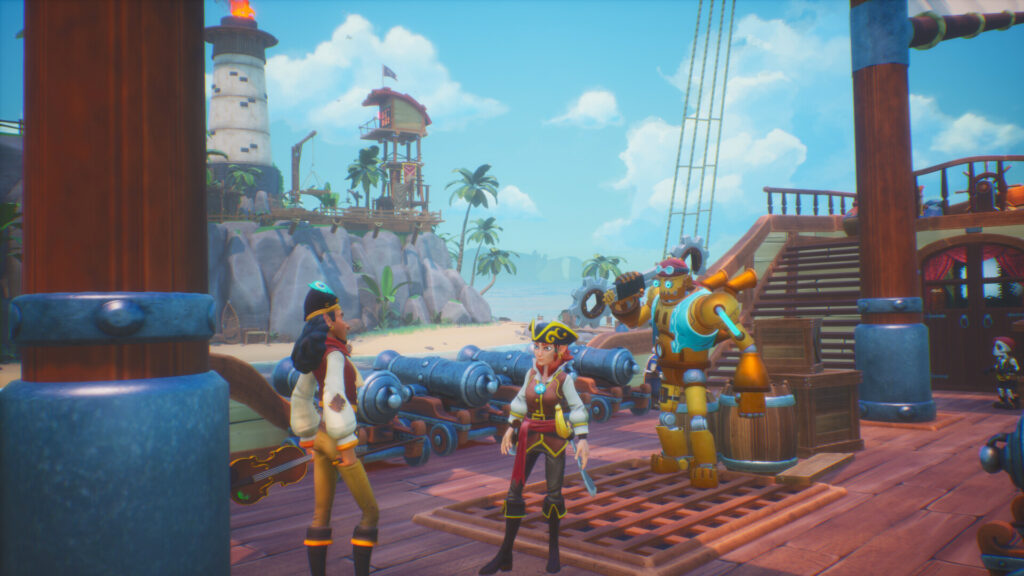
The faction Ocean and her crew will be fighting will mostly be the undead skeleton crew, but occasionally the Navy will be your obstacle. Each faction has its mix of melee fighters and ranged attackers, who are all colour-coded to mark their toughness. While there are other factions in the world of Trident’s Tale, they don’t end up being an enemy outside of boss encounters and rare open-world events.
While sailing, the music shifts from a rather jovial pirate theme to a compilation of popular sea shanties which blend into each other. Voice acting is competent and, while I felt some of the voices didn’t match the characters, none of them were terrible, just a bit flat in some places.
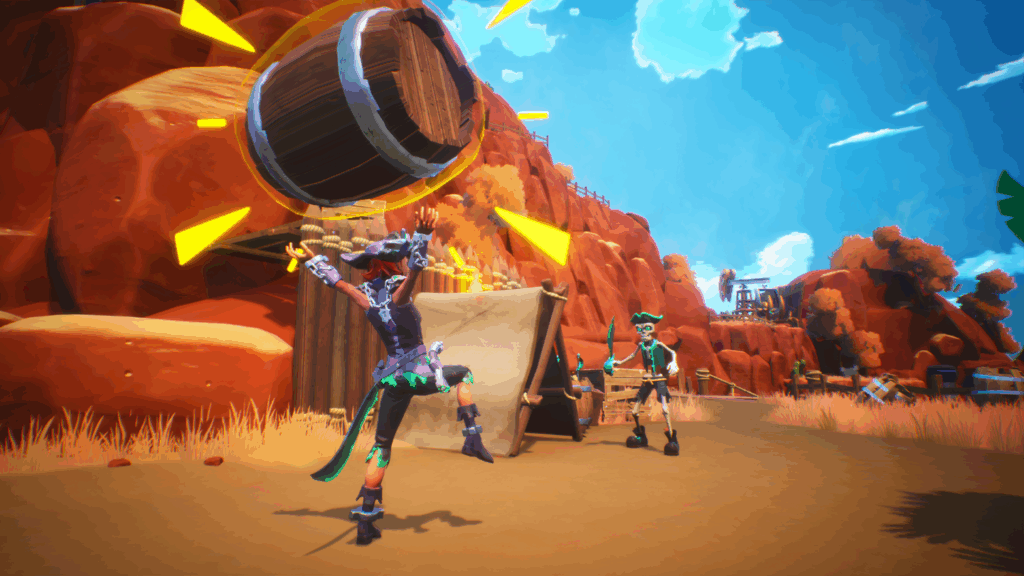
Trident’s tale is presented like a Saturday morning cartoon with simple character motivations and very few twists and turns. Ocean herself isn’t very deep and, to be honest, can come across as a bit of a brat. Sadly, the rest of the cast and crew are equally one-dimensional.
For the longest time, I was looking at the character models and there was something I couldn’t put my finger on. That was until several hours in when I realised the design of the characters reminded me of a show my child watched: Paw Patrol. I don’t know if this was intentional or not, but in my research, I did discover that 3D Clouds did work on a Paw Patrol game in the past. The 3D models are colourful and stylised and while the regular NPC’s do have the same face each main character is unique and recognisable. Even the monsters are similarly cartoony rather than horrifying.
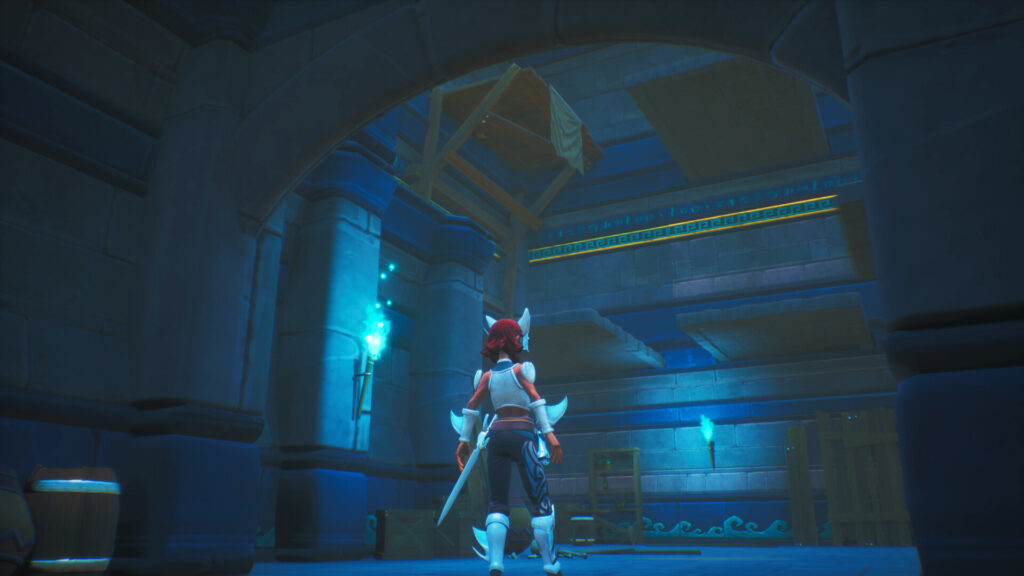
I still feel that Trident’s Tale could have used just a touch more time in the oven as the overall presentation was just a little bit unpolished. Characters had idle animations which sometimes involved a prop and this prop would sometimes desync from the model making it float from the body. The lip-syncing seems to be more of a suggestion than actual animation in cutscenes. Controls felt a little unresponsive at times and the lock-on could just stop working in others. Magic attacks take longer than you expect to throw out and some deaths felt unfair and cheap. These things weren’t prevalent enough to ruin my experience, just mildly annoying.
I spent a total of ten hours in Trident’s Tale and saw the credits. I didn’t do all the side quests as some of those “scour the world” quests tried my patience and while I did enjoy my time with it there was no option to continue after the credits or even a new game plus option.
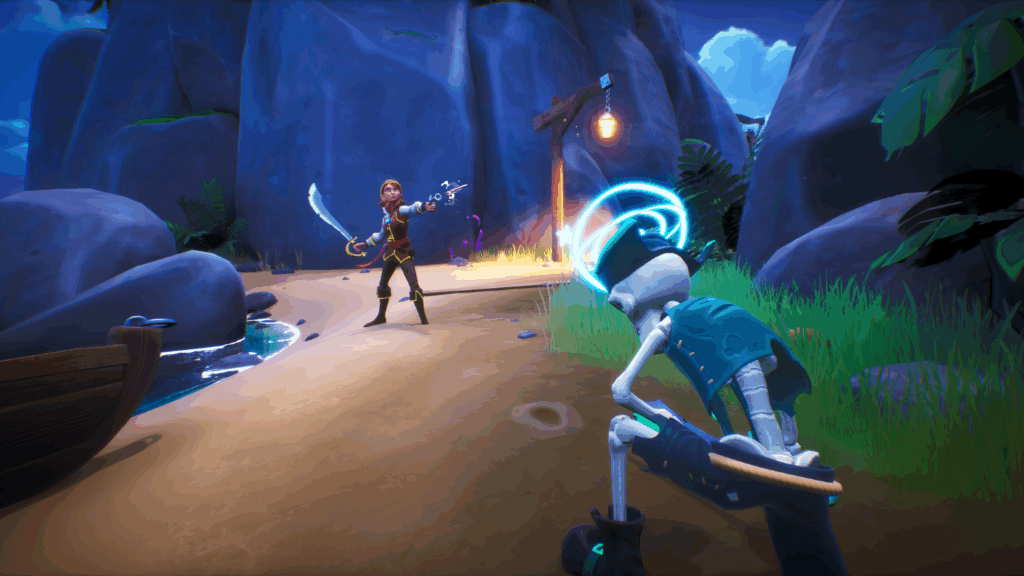
Overall Trident’s Tale comes across as a mix of Assassin’s Creed IV: Black Flag with the aesthetic of Sea of Thieves. Except for a couple of examples of mild swearing and the early game difficulty, it would have been an excellent recommendation for a more child-oriented audience.
As it stands, Trident’s Tale sits in this weird place where it looks and sounds like a game for younger players but requires the skills of older more experienced players. If you can get over these setbacks, however, Trident’s Tale is definitely worth a look.

Developer: 3DClouds
Publisher: 3DClouds
Platforms: Microsoft Windows, Xbox, PlayStation, Switch

